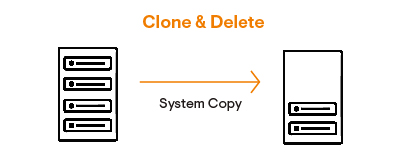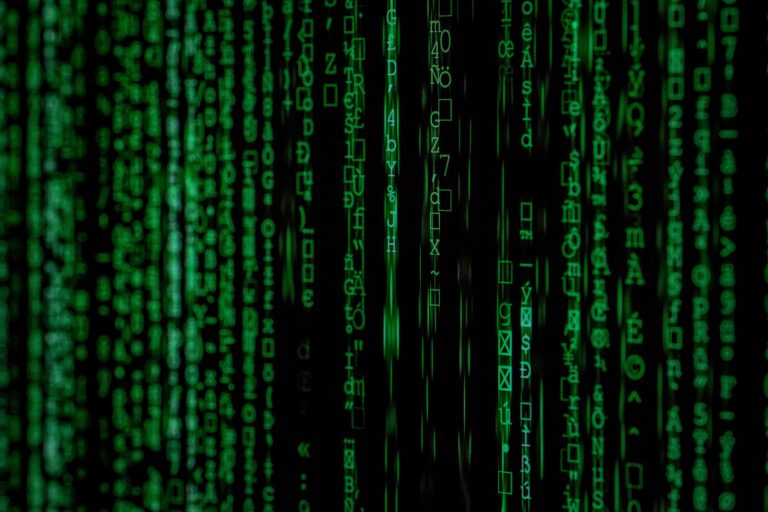Estimated reading time: 5 minutes
If you’ve been following along for the past few weeks, you’re probably wondering where this is going. You know what a carve-out is. You know what makes them special. You know what the different business scenarios are. Why is this important? Well, all these pieces come together to determine which of the four technical approaches make the most sense for your organisation. Let’s jump right in.
As we see it at cbs, these four technical approaches come in two flavours: system clone and selective carve-outs. What’s the difference? System clones can be executed with standard SAP technology (basis or SAP LT), whereas selective carve-outs must be performed using specialised software such as the cbs ET Enterprise Transformer.
Option 1: Clone and Run

This system copy includes all customising, repository, users, authorisations, and data. This option works well for internally driven carve-outs where the source system isn’t too large, as the hardware would need to be doubled in order to support the copied system.
Option 2: Clone and Delete

The next step is to delete obsolete data from the target system using SAP LT or cbs ET tools. As opposed to option one, the result is a system that only includes the data in scope. However, this option is not ideal for customers with large databases. Due to additional hardware costs, licenses for SAP LT software can get expensive as they are based on database size (does not apply to cbs ET). There is also always a chance that not all data and/or customising is deleted correctly and ends up in the hands of a competitor.
Option 3: Selective Carve-Out in Empty Shell Copy

- The target system does not require as much hardware as the source system due to this being just a “skeleton” copy.
- Confidential data that is not in scope will never touch the target system, ensuring no proprietary information exchanges hands.
The second step is to get a little more complex and require a standalone blog post to explain, but I’ll try to summarise as best as possible. Employing specialised software (standard SAP tools such as SAP LT are not capable of this), we set selection criteria to extract only the data in scope from the source system and import this into the target system. In this case, considering the target system is configured the same way the source system is, no mapping or data transformation is necessary. Selection criteria can be set based on different parameters such as company codes, plants, profit centres or cost centres, to name the most common ones used. This allows customers to surgically select particular subsets of data to ensure only the necessary data is handed over to the buying party.
Option 4: Selective Carve-Out in a new system

The steps are almost the same as above. The only difference is that after extracting data from the source, it needs to be mapped and transformed into the target system structures. This mapping and transformation are software-driven and automated, with robust validation features that guarantee data quality and consistency. These last two options lay the foundation for Selective Data Transition to SAP S/4HANA.
Depending on what type of carve-out your organisation is facing, and after answering some of the questions laid out in our first blog post, it becomes clear which one of the options above makes the most sense. Our software ET Enterprise Transformer has extensive analysis functionality to help determine the best way forward. Call us today to schedule a free consultation.
Your Contact



